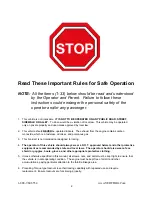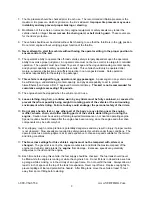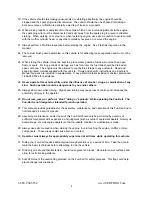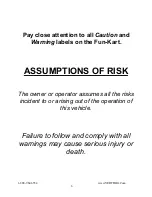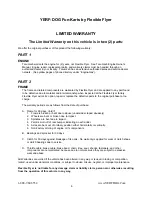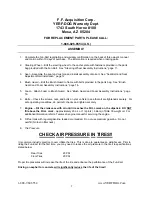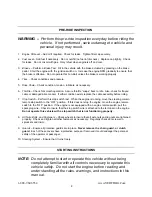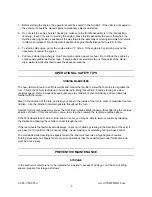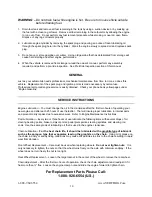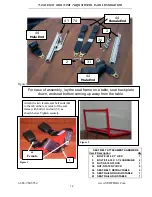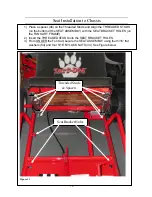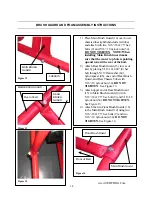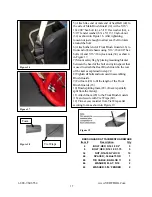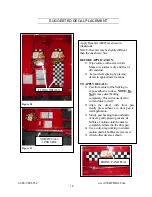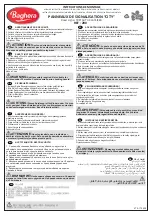
1-888-962-6554
www.YERFDOG.Com
3
7. The tire pressure should be checked prior to each use. The recommended inflation pressure is the
maximum tire pressure, which is printed on the tire’s sidewall.
Improper tire pressure may cause
instability and may prevent proper braking or steering.
8. Modification of this vehicle or removal of any original equipment or safety decals may render the
vehicle unsafe or illegal.
Never remove the chain guard, or belt clutch guard.
These covers are
for the riders’ protection.
9. The vehicle should never be started without first checking to see that the throttle is in the
idle
position.
Do not start engine without verifying proper function of the throttle.
10.
Never attempt to start this vehicle without having the operator sitting in the proper position to
ensure control of the kart.
11. The operator’s ability to operate this off-road vehicle safely is largely dependent upon the operator’s
ability to exercise proper judgment. An operator also must not be too small or too large for controlled
operation. The operator must be at least 16 years of age and having understanding, mental capacity,
and physical capability to safely operate this vehicle. This vehicle should only be operated after
mature, supervised instruction and sufficient practice in non-congested areas. Safe operation
includes responsibility for the safety of a passenger.
12.
This vehicle is designed for one operator and one passenger.
A passenger on any vehicle must
be sufficient age, understanding, mental capacity, and physical capability to act to protect
himself/herself, and wear a D.O.T. approved helmet at all times.
This kart is not recommended for
cumulative weights exceeding 150 pounds.
13. The engine should be stopped when the vehicle is not in use.
14.
Loose clothing, long hair, or articles worn by any riders must be fully contained, or covered to
prevent them from possibly being caught in rotating parts of the vehicle or the surrounding
environment while riding. Failure to obey could endanger the personal safety of the riders.
15.
Do not place hands, feet, or any other part of the body or any clothing near the engine,
muffler, wheels, chain, and other rotating parts of the vehicle while riding or running the
engine.
Caution must be used in performing required maintenance on or near an operating engine.
Special caution should be taken after the engine has been running, since the engine and other drive
components may be extremely hot.
16. Wet, slippery, rough, or steep terrain is potentially dangerous and may result in injury if proper caution
is not observed. Slow speeds are required to safely operate this vehicle under those conditions. The
operator must use mature judgment, skill, and experience to choose a speed suitable for the terrain
and riding conditions.
17.
The Governor settings for this vehicle’s engine must not be tampered with, altered, or
changed.
The governor is set by the engine manufacturer and limits the maximum speed of the
engine (and vehicle) and protects the
engine
from damage. Excessive speeds are potentially
dangerous to the rider and the engine.
18. Each time before using this vehicle, the fuel supply should be checked. The fuel tank should never
be filled while the engine is running or while the engine is hot. Do not fill tank in closed area such as
a garage, while smoking, or in the vicinity of an open flame. Do not overfill the tank. Always allow at
least ¼ inch of space at the top of the tank for expansion. Never top off tank. Replace cap tightly to
prevent spillage of fuel and potential fire hazard. After filling tank, move the vehicle at least 15 feet
away from spot of filling before starting.


